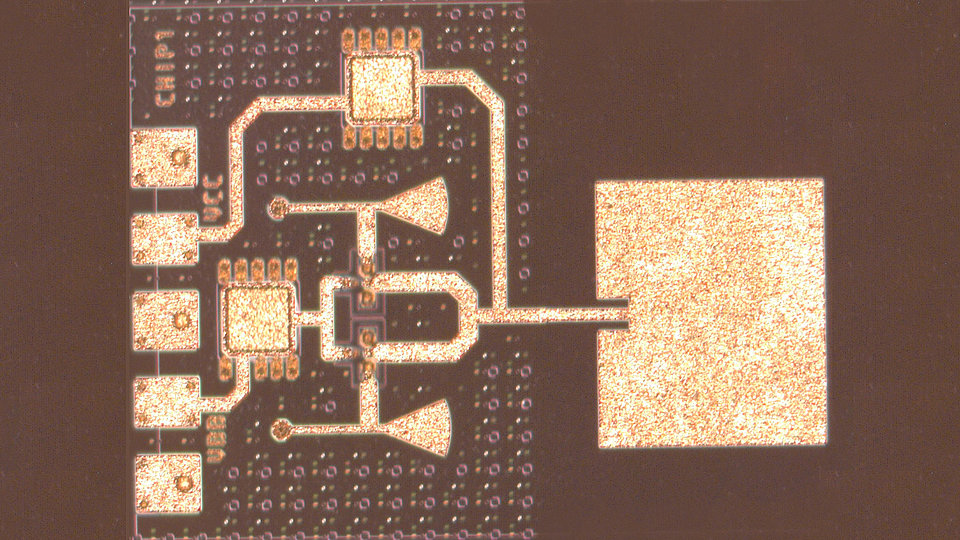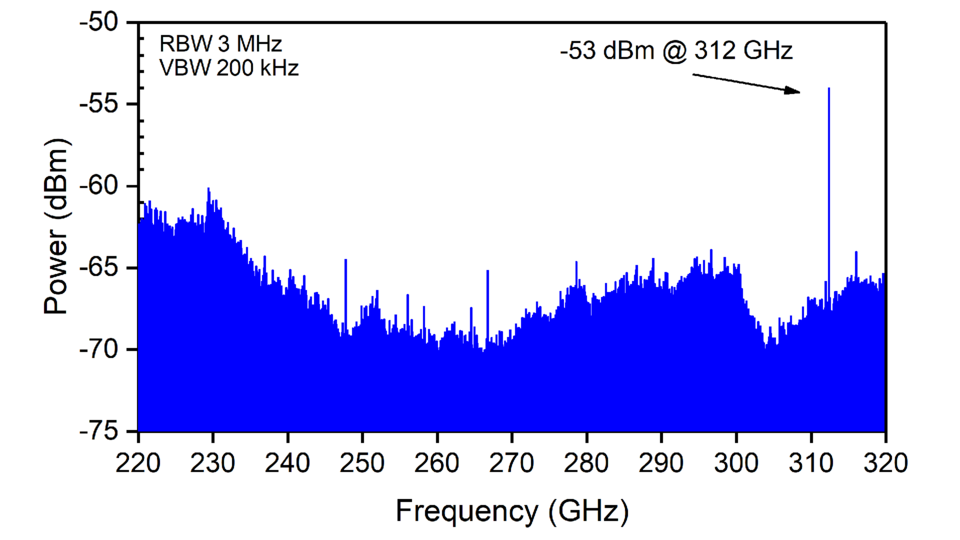Signal source with integrated antenna for THz applications in InP-DHBT technology
Recent progress of device scaling and successful operation of radio frequency (RF) integrated circuits creates an increasing interest in the terahertz (THz) spectrum with its wide range of possible applications. The frequency range between 100 GHz and 3 THz offers large bandwidth for high-speed communications as well as improved performance of radar sensors and imaging applications due to the short wavelength. For all of these systems, signal sources are key building blocks. So far, most of the THz signal sources are expensive and bulky. Therefore, a highly efficient compact THz source is essential because it can replace bulky and slow mechanical beam-steering approaches often found in THz applications. Harmonic based signal source offers an attractive alternative, allowing for lower cut-off frequencies and simplifying THz frequency generation. The advantages of harmonic oscillators are that they can exhibit decent output power and allow to extend the output frequency close to the maximum oscillation frequency of the transistors or even beyond.
FBH has demonstrated an efficient compact 315 GHz signal source with integrated antenna. The entire MMIC is realized using a 0.8 µm-emitter transferred-substrate (TS) InP-DHBT high speed process with an fmax of 320 GHz, developed at FBH. As can be deducted from Fig. 2 the oscillator operates very close to transistor cut-off frequency. The active source is based on a push-push topology and the antenna is based on a half-wavelength patch antenna topology. The BEOL stack height is around 10 µm, which allows radiation to the top and reduces losses in the substrate. The stack dielectric exhibits a low permittivity, which helps improving radiation efficiency. The source together with antenna delivers -10 dBm output power. DC consumption is only 21 mW from a 1.6 V power supply, which corresponds to 0.5 % overall DC-to-RF efficiency. The figure shows a microphotograph of the oscillator chip and the measured output power spectrum, free of spurious signals.
This work has been partially financially supported by the German Federal Ministry of Education and Research (BMBF) under project number 6G-RIC and the German Space Agency (DLR) within the project DLR MIMIRAWE II.
Publication
M. Hossain, Tom K. Johansen, R. Doerner, H. Yacoub, W. Heinrich and V. Krozer: „A 315 GHz Source with Integrated Antenna in InP-DHBT Technology“, European Microwave Week, Milano, 2022

